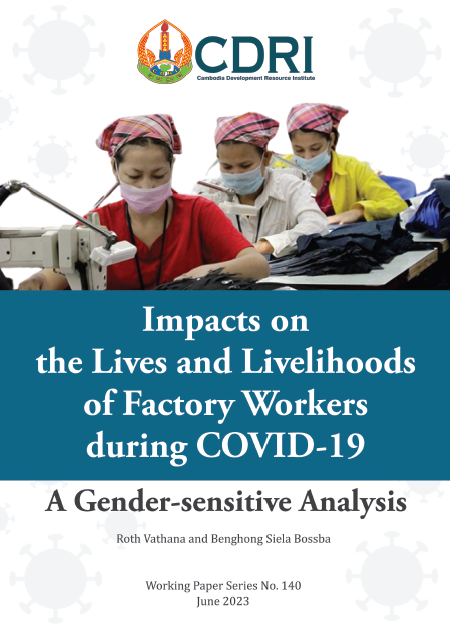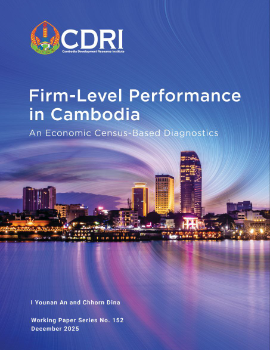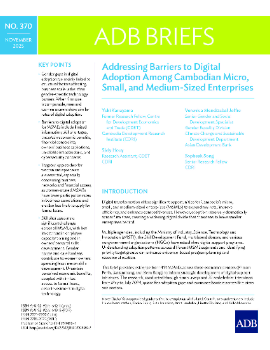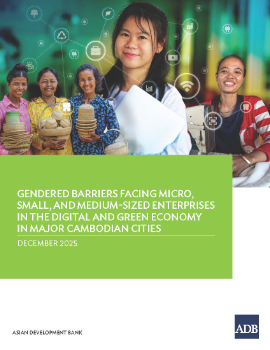
Impact on the Lives and Livelihoods of Factory Workers during COVID-19
Keyword: COVID-19 Impact, garment sector, gender disparities, economic shock, coping strategies
Abstract/Summary
This study examines the gendered impacts of COVID-19 on Cambodia’s garment, textile, and footwear (GTF) sector, which employs around 800,000 workers—80 percent of whom are women. Using data from a phone survey of 2,000 workers conducted in mid-2021, the study explores changes in earnings, consumption, remittances, mental health, domestic responsibilities, and coping strategies. Findings reveal an average income loss of 39.5 percent, with women experiencing greater reductions than men. The pandemic also intensified unpaid care work, with women reporting a 56.4 percent increase in childcare time compared to 38.1 percent for men. Mental health deteriorated, particularly among men, and conflicts at home rose. Coping strategies included borrowing from relatives, reducing consumption, and relying on government cash transfers, which reached 60 percent of respondents. However, 39.2 percent reported not receiving support due to lack of awareness. The study highlights the need for continued gender-sensitive assistance, improved targeting mechanisms, financial literacy programs, and expanded access to skills training. It also calls for greater male involvement in domestic responsibilities. These findings underscore the importance of inclusive recovery policies that address both economic and social dimensions of vulnerability in Cambodia’s GTF sector.



